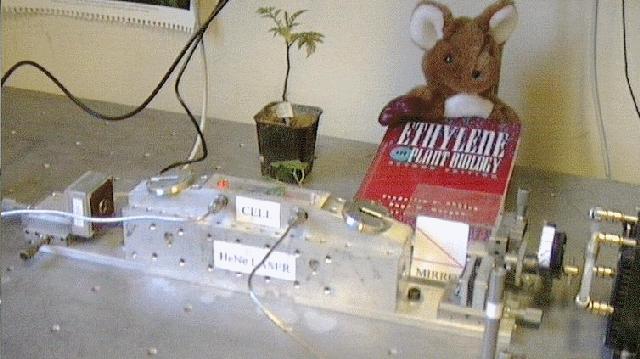

We have developed a system to detect very low concentrations of pollution gasses by an optical technique known as mirage effect spectroscopy . We are able to measure one part in 4 trillion of certain gasses in open air, with a 50 cm (2 ft.) long cell.
The mirage effect technique shares certain attributes with absorption spectroscopy; it relys on the heating produced in the air by absorption of a laser beam, and the signal is proportional to the absorbed energy. The difference between our technique and absorption spectroscopy is that we use a second, weaker and non absorbed laser to probe the region heated by the first. The unequal heating caused by the first laser causes the second to be deflected from its original path, by an angle that depends on both the concentration (quantity) and kind of gas in the air. We can therefore use the technique to distinguish between different gasses in the air, or a mixture, as can be done with absorption spectroscopy, but with much better concentration limits of detection with a short laser path, since we measure the deflection of the second laser, which depends on the qradient (distribution) of energy absorbed which turns into heat, and not simply the quantity of energy absorbed.
These advantages have allowed us to construct an compact and rugged instrument capable of very sensitive measurents, either in controlled (lab), or in true in situ (open air) conditions. Numerous applications have been studied, including measurements of gas produced from polymer photochemistry, and plant metabolism and stimulus response. Current work includes improving the automation of the system, and pursuing practical applications in more detail. A photo of the experiment can be seen above, with a biological sample (cherry tomato seedling) and our mascot.
For a more technically detailed description, click to continue
Contact : Claude Boccara